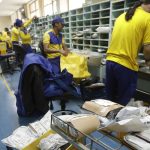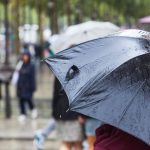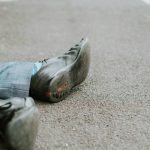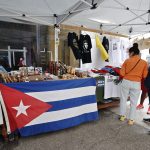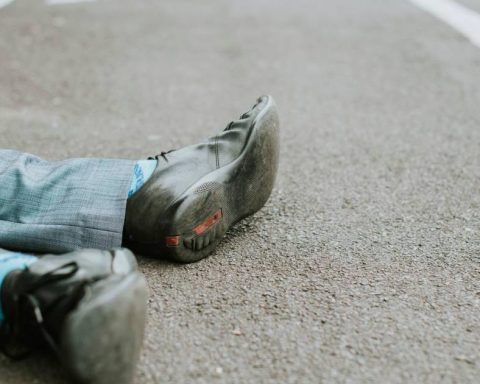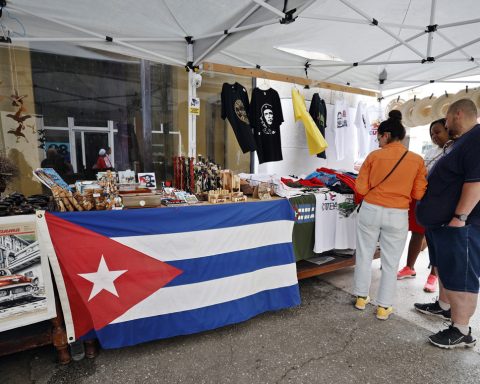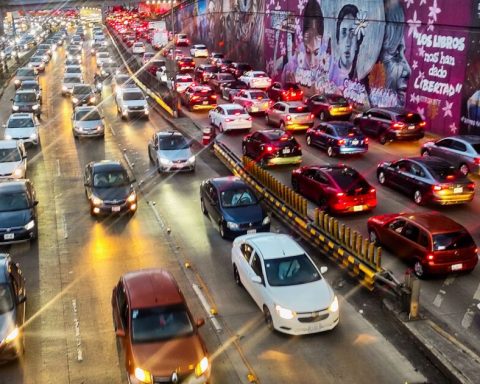The documents that confirm the complicity of sectors of the international press with the civic-military dictatorship of Argentina
“What you call successes are mistakes,
those who recognize as mistakes are crimes
and what they omit are calamities.”
Rodolfo Walsh, March 24, 1977
The bureaucracy of state terrorism left imprints of its atrocities. In this case, Télam presents eight folders with information never before revealed that exposes one of the obsessions of the criminal regime that took power on March 24, 1976: its attempt to counteract at the international level what the military junta defined as a campaign “anti-Argentine” which was, in truth, a succession of denunciations in the country but, above all, abroad for the torture and disappearance of thousands of people in the extermination camps that the dictatorship deployed throughout Argentina.
The dictatorship designed an action of counterinformation and propaganda that had the advice of the influential multinational advertising and communication agency Burson-Marsteller, and which had the Ministry of Foreign Affairs as the body from which the plan was articulated through which the genocidal government it tried to neutralize the questions it received in the main capitals of the world for its systematic violation of human rights.
In the basements of the Palacio San Martín, headquarters of the Foreign Ministry, the press office was located. A ministry that, in the distribution of power among the three forces, remained under the orbit of the Navy, commanded by Emilio Massera. Every day, people who were detained and disappeared were transferred from the ESMA to the secluded building in the Retiro neighborhood to work on preparing the files and monitoring the news published about Argentina in the international press. A slave labor that was confirmed for the first time before the Justice, in 1985, by the statements of some survivors in the Juntas Trial. The eight folders that are detailed in this investigation made up that file of horror with which the military regime systematized the planning of the lie. The folios of the folders found indicate that there were hundreds of bibliographies made that have not yet seen the light and that they may never be found. But they existed, as evidenced by the documents presented exclusively by Télam.
The journalist Enrique Vázquez carried out the journalistic investigation, which was joined by a multidisciplinary team from the agency. The work details the content of the records that remained hidden for more than 40 years. The narrative is completed with a historical context that highlights some of the actions of State terrorism or civil resistance to the regime that had an impact of international relevance, such as the disappearance and murder of journalist and writer Rodolfo Walsh, the kidnapping of the journalist Jacobo Timerman or the murder of the founders of Mothers of Plaza de Mayo and the French nuns. The 1978 World Cup that attracted the eyes of the world to Argentina is also highlighted.
One of the maneuvers of the civic-military dictatorship was the invitation of journalists from different central countries in which there was a presence of Argentine exiles and complaints against the human rights violations of the government of Jorge Rafael Videla.
In each of these eight folders, some journalists and media outlets who agreed to be part of the propaganda operation remained hidden for more than four decades; the exchanges of letters, recommendations and praise, the invitations and even the cables reserved with confidential information.
A central part of the planning of the lie remained hidden. Until today.
1981 Jacques Schoonjans
origin: Belgium
The journalist who was “own troop”
By Enrique Vazquez
The folder bearing No. 128 exemplifies like no other the promiscuity between the intelligence services, the press offices of the dictatorship, the embassies abroad and the reuse of “rotten meat” in local media.
The documentation revolves around the journey of the Belgian journalist Jacques Schoonjanswho defines himself as “freelance” with the ability to publish his articles in magazines and newspapers in Brussels, but who in turn is defined by the Argentine ambassador as “own troops.”
Schoonjans had already been in Buenos Aires, as part of a tour that he undertook, apparently on his own, through the countries of the American Southern Cone: Brazil, Uruguay, Chile, Bolivia and Argentina. Interestingly, the countries linked in the Condor Plan. From the documentation it appears that in our country he met with officials from the Ministry of Economy and the Presidency, and that the Ministry of Public Information gave him an article already prepared, with the possibility that it would be published by one of the media with which Shoonjans I had regular contacts. Indeed, the note appeared in the magazine The Nouvel Europe Magazine, an ultraconservative monthly with little circulation. The embassy sent photocopies to the Foreign Ministry, the Foreign Ministry translated the article -with slight stylistic touches but indistinguishable from the original- and sent it to the Yepthe IAPA turned it over to the National Intelligence Directorate, where it had been written, and the DNI returned it to the IAPA with the recommendation that it be published in local print media.
La Nación and La Razón hosted it on their pages.

After the “success” of the operation, the IAPA sent a note to the Foreign Ministry providing Schoonjans’s personal data, with the suggestion that the Dissemination Center set up in Paris would make contact with him. It could be useful.

Well “own troops”, as the Argentine ambassador in Brussels describes it in a handwritten letter to a “friend”. The friend in question was Colonel (RE) José María Villafañe, then Undersecretary of Planning. But the most important thing is the sender, who signs only as “Delia”.

Delia was the general (RE) Carlos Cesar Ildefonso Delia Laroccawhom the first Board of the “Process” installed as ambassador in Brussels to safeguard him from possible reprisals from the Montoneros organization, given his activity prior to the effective withdrawal.
Delía Larocca was commander of the III Army Corps between January 21 and September 29, 1975, a period in which the repressive violence of the Operative Independence in Tucumán and managed the actions of the “Comando Libertadores de América”, Cordoba’s version of Triple A.
The Montoneros pointed him out as directly responsible for the annihilation of the Pujadas family. Mariano Pujadas, founder of the Montoneros organization in the province of Córdoba, had been shot dead at the Almirante Zar base in Trelew on August 22, 1972. On May 14, 1975, a military commando kidnapped his parents, José María Pujadas and Josefa Badell, along with her single brothers, José María and María José. They riddled them with machine-gun fire, threw them half-dead into a well, and threw a grenade at them.

In addition to having done the break-in work for the arrival of Luciano Benjamin Menendez Commanding the III Corps, Delía Larocca participated in the final operation against President Isabel Martínez de Perón, unleashed in August 1975, which ended with the “legalist” general being retired. Alberto Numa Laplane and his replacement by Jorge Rafael Videla.
In Brussels, the ambassador devoted himself to press operations and his favorite sport, horse riding. He was in charge of the embassy until 1979. He died in Buenos Aires at the age of 91, on October 6, 2014, when he was charged with 5 criminal charges for aggravated illegitimate deprivation of liberty, aggravated homicides and imposition of torture.







